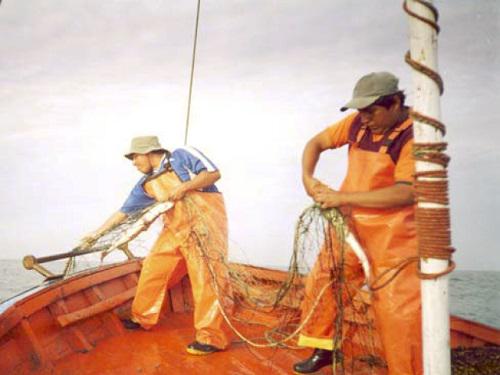Liliana Ayala
Other projects
9 Sep 2009
Albatrosses, Petrels and Fisheries in Peru: Evaluating Bycatch and Seabird Distribution and Abundance
The study will estimate how many albatrosses and petrels are caught and die in artisanal longline fishing operations in the north of Peru. We will determine an indicator of ‘interaction’ between seabirds and fisheries through on-board observations during normal fishing activities.

Fishing some Humpback smooth-hound. Gillnet boat from San Jose.
Studies to evaluate interactions between longline fisheries and albatrosses and petrels in South American countries are scarce. In Peru, there is just one research about seabird by-catch in artisanal longline fisheries that was conducted almost ten years ago through questionnaires. No study to date has been carried out using on-board observers. That study suggested high captures of albatrosses and petrels in longline fisheries in northern Peru. The total number of birds caught per year varied from 2370 to 5610 and the Waived Albatross endemic to Galapagos was apparently the most threatened. This species is distributed, principally, in our study area.

Peru has ratified the Albatrosses and Petrels Conservation Agreement (ACAP) in 2005. Although, Peruvian government only includes one species of albatross (Galapagos Albatross Phoebastria irrorata) and one of petrel (Galapagos Petrel Pterodroma p. phaeopygia) as threatened. Our study will provide technical information on the conservation status of other species of albatrosses potentially threatened by longline fisheries in Peru.
The study will estimate how many albatrosses and petrels are caught and die in artisanal longline fishing operations in the north of Peru. We will determine an indicator of ‘interaction’ between seabirds and fisheries through on-board observations during normal fishing activities. This study is important because albatrosses and petrels migrate to the coast of Peru to forage in the highly productive waters of the Peruvian Upwelling System.
This research will help assess seabirds mortality due to fishing activities which is currently the main threat faced by these species at a global scale. Our results will be made public through outreach to local communities and will lead to specific recommendations to mitigate by-catch the ones that will be available to local and regional governments thus contributing to the conservation of these bird species that migrate along the Peruvian coast.